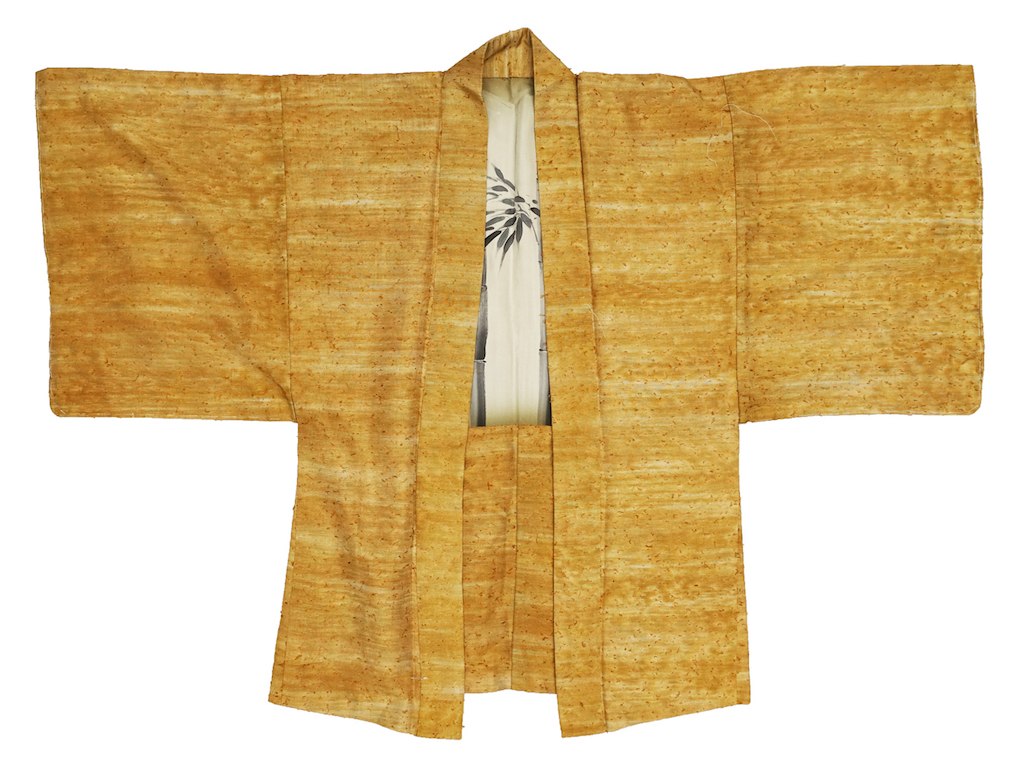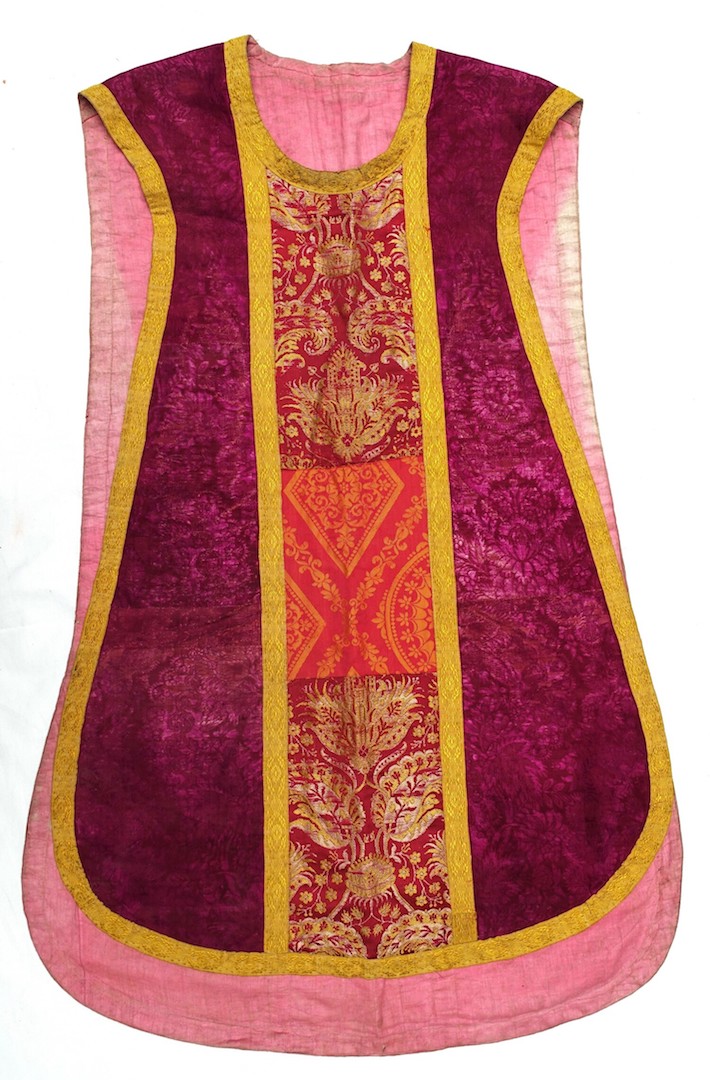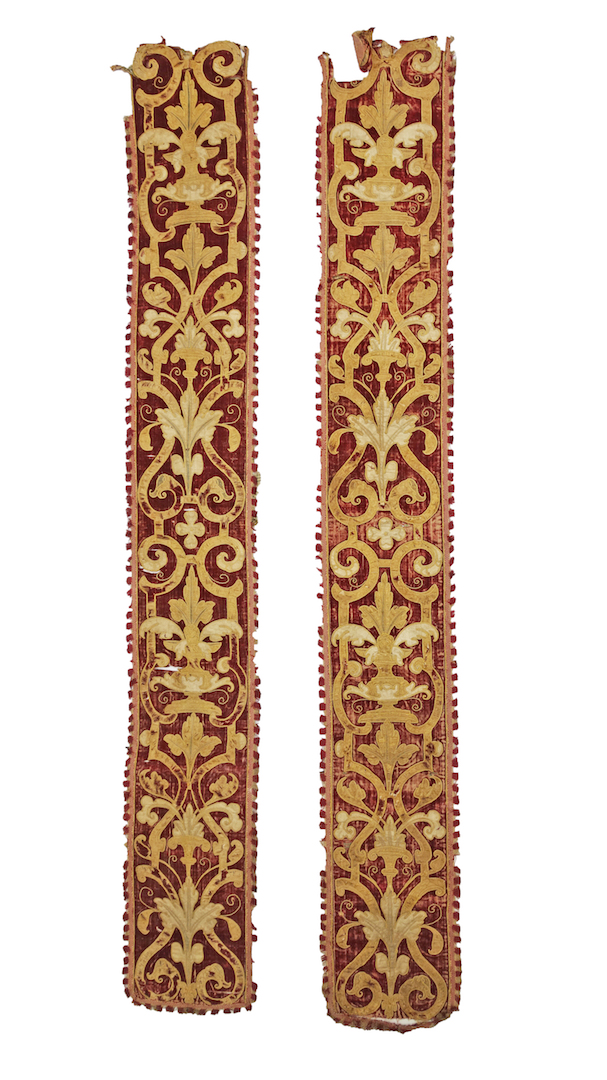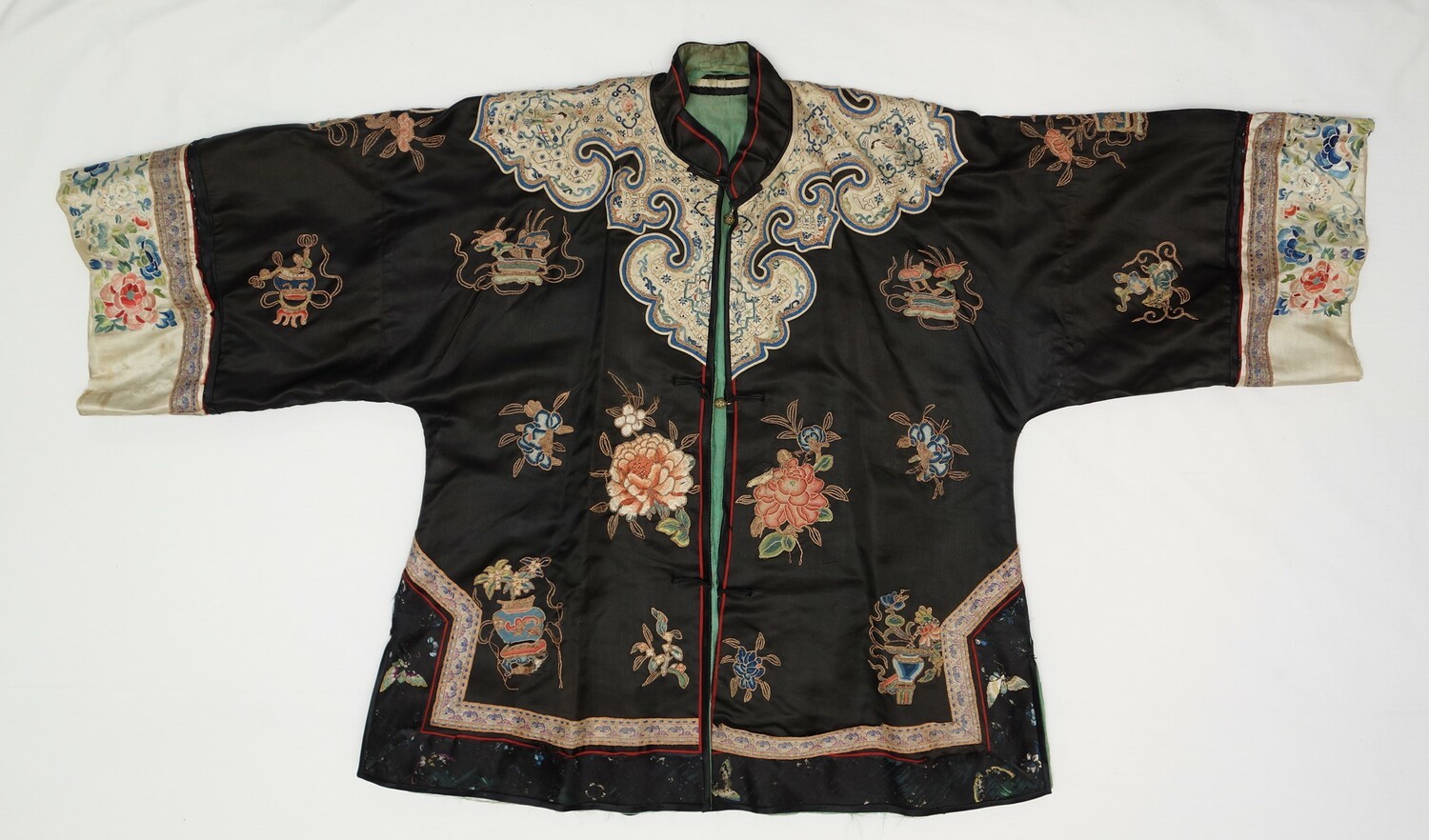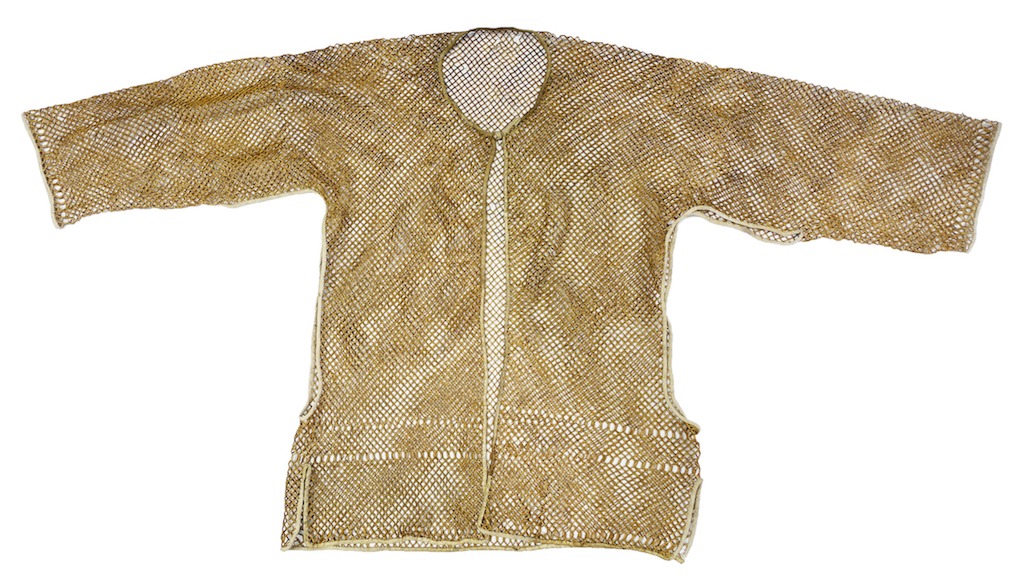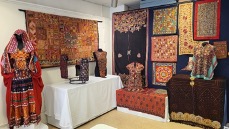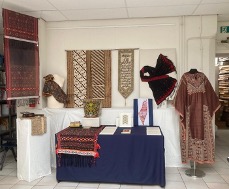What is the TRC?
The Stichting (‘Foundation’) Textile Research Centre was established in 1991 with the stated aim of supporting the academic research of archaeological and anthropological textiles and dress, and their presentation to a general public. The most important part of our work is the building up and study of a textile and dress collection. These garments are available for teaching, research and exhibition purposes.
The TRC Board, per 1 January 2024
- Chairman: Prof. Bas ter Haar Romeny
- Treasurer: Prof. Olaf Kaper
- Secretary: Dr. Karel Innemée
- General board members: Prof. Lammert Leertouwer and Dr. Gillian Vogelsang-Eastwood (Director).
The TRC International Advisory Board, per 1 January 2024
- Prof. J. Eicher (University of Minnesota, USA)
- Prof. John Fossey (Montreal Museum of Fine Art, Canada)
- Dr. Dale Gluckman (San Francisco, USA)
- Prof. Michael Hahn (Leeds University, England, ret)
- Mrs. Widad Kawar (Amman, Jordan)
- Prof. Renier Munk (Amsterdam University, ret),
- Prof. Melissa Percival (Exeter University, England)
- Dr. John Peter Wild (Manchester, England).
Permanent staff and volunteers
Dr. Gillian Vogelsang-Eastwood continued as the director of the TRC. She is a specialist in embroidery and Middle Eastern textiles and dress. For 2024, the volunteers included: Shelley Anderson, Heloise Bellouard, Beverley Bennett, Marije Boerma, Olivia Buchan, Alice van Duijnen, Rose Groen, Augusta de Gunzbourg, Jenny Kano, Naoko Kikuchi, Maria Linkogle and Hanke van Prooije.
Obituary
It was with sadness that we heard about the death of Prof. Lammert Leertouwer (1932-2024) on Monday, 21st October 2024. Lammert was a member of the TRC Board for many years and was Chair of the Board until his retirement in 2017, but he continued as an ordinary member.
 Lammert Leertouwer, by Marike Bok. I first met Lammert at the Volkenkunde Museum, Leiden (now the Wereldmuseum), where he was a special advisor to the museum. He had just retired as Rector Magnificus of Leiden University, and the museum had quickly employed him to help them promoting research at different levels.
Lammert Leertouwer, by Marike Bok. I first met Lammert at the Volkenkunde Museum, Leiden (now the Wereldmuseum), where he was a special advisor to the museum. He had just retired as Rector Magnificus of Leiden University, and the museum had quickly employed him to help them promoting research at different levels.
We met in the queue of the Museum’s café and discussed life, the universe, textiles, etc. He totally understood what we were doing and why. When his time at the museum came to an end, he very kindly agreed to continue helping the TRC, because he was intrigued by us, and what we wanted to do.
I had various talks with Lammert in his study at home discussing problems, people and the future of the TRC. His many anecdotes were proverbial. I shall miss Lammert.
Gillian Vogelsang.
The TRC is a Cultural ANBI
From 2013 the TRC is officially recognised as a cultural ANBI (“Culturele ANBI”). It means that individual gifts by Dutch citizens are tax deductible for 125% for a private person and 150% for a company.
 Erasmus+ accreditation
Erasmus+ accreditation
Since 2022 the TRC has Erasmus+ Adult Education Accreditation. This means that exchange of students with other Universities in the EU has been made much easier.
The TRC and online activities
The TRC has its own website, which was designed and is being maintained by Joost Kolkman and in doing so he is supported by Coen van der Geest. The site carries a wide range of information about the TRC, including its aims, annual reports, donation information, possibilities to loan objects or to hire complete exhibitions, short items of current interest, the library catalogue, the objects catalogue, TRC Needles, the TRC Blogs, etc. The website information is usually given in both Dutch and English.
TRC Collection: Work is progressing on bringing the complete TRC Collection online. By December 2024, over 49,000 objects were included in the catalogue, and the vast majority of them have been described and photographed. The database is already proving to be an asset to everyone concerned. Further developments of the Collection in 2024 are discussed below. The online catalogue of the TRC Collection can be downloaded here.
TRC Images: We now have another group working on TRC Images, which is a much smaller database that includes the TRC collection of images (postcards, photographs, even stamps) relating to textiles and costume from around the world. If you have any suitable items that you are willing to donate to the TRC, please do not hesitate to get in touch with us.
TRC Needles: TRC Needles is a digital encyclopaedia of decorative needlework and has now been online for just over some four years. Needles currently includes nearly 3000 entries and more and more information and partners are agreeing to help with the entries and providing information and/or photographs. We range from the modern stitch poetry of Janet M. McDonald Davies (New Zealand) to early archaeological finds of embroidery from China. For TRC Needles, click here.
TRC and social media
Thanks to the dedicated efforts of Augusta de Gunzbourg, Shelley Anderson and Willem Vogelsang, interest in the TRC on Facebook is growing rapidly and every week brings more and more subscribers to the TRC Facebook page. By the end of 2024 there were more than 14,000 followers of TRC Facebook. The site is in English and includes news about all the recent developments and events at the TRC, plus some personal comments about items on display or in the TRC collection.
During 2024, Shelley Anderson also ran Pinterest for the TRC. Pinterest features images of textiles and garments from the TRC’s collection and activities. In 2021, several TRC volunteers started a TRC Instagram page. In 2024 we are followed by over 15,000 people. This page is designed to show TRC objects with very short stories.
In addition, at regular intervals the TRC publishes a Newsletter that includes a brief update of events and a list of forthcoming activities. The newsletter is published in both Dutch and English.
TRC Blog: The TRC has its own blog page called Textile Moments, or more commonly: the TRC Blog. This page is used by members of the TRC or indeed anyone else, who has a story to tell about textiles, clothing, exhibitions, pictures, and so forth. A full list of all the TRC blogs published in 2024 can be downloaded here. The list also provides access to the contents.
TRC Gallery
The TRC Gallery is used to hold temporary exhibitions about textiles and dress. Access to the exhibitions is free of charge. In 2024 various events and exhibitions were held in the gallery, including the exhibition Dragon robes, butterfly pins and lotus shoes: Clothing in Imperial Qing China (March to October), and Shisha embroidery. More about these exhibitions further below.
The TRC Shop
The TRC Shop occupies a small area at the rear of the Gallery. It is not the main business of the TRC, but allows us to sell items that would either not be suitable to keep in the main collection or are duplicates of items we already hold.
The Library
Thanks to the hard work of the library team, the TRC Library catalogue went online in August 2015. By late December 2024, well over 6000 titles are included in the library catalogue (to be downloaded here), with cross-references, book reviews and recommendations. The library team, and especially Roos Groen, has worked very hard getting this all ready and the list of books in the collection is being up-dated on a regular basis. Thanks to the generosity of people, there are about another 1,000 books that need to be registered.
The TRC Library is growing steadily and developing into a major source for the study of textiles and dress. The publications are available for reading at the TRC rather than for loan. Please note, alas, we do not send books to readers via the post, etc.
Cooperation with Leiden Council
In 2024 we have been working on various projects together with Leiden Council in order to gain more recognition for the importance of textiles. We have been in regular contact with Wethouders (Aldermen) Yvonne van Delft and Fleur Spijker, as well as council officials, Steef Löwik, Renate van Zalen and Lara Ummels. One of the more practical projects relates to finding a new building. Leiden Council has been looking and discussing various possibilities on our behalf.
In particular they helped organise and pay for a feasibility plan produced by Peter Inklaar, Charistar, with the help of Carin Reinders. The (positive) report was official presented to Leiden Council in 2024 and has been used as a basis for further discussions and conversations about keeping the TRC in Leiden.
In particular a new slogan was developed during this phase: Leiden City of Textile Knowledge which is based on two existing slogans, namely: Leiden: City of Textiles (referring to Leiden as a major textile producing centre) and Leiden City of Knowledge (i.e. the university and the diverse museums in Leiden). The new slogan is being used at various events and moments to strengthen the idea of Leiden being actively involved in textiles at various levels.
In addition, the Council gave practical support in the form of a financial contribution for the purchase of a collection of Japanese kimono and jackets (see below). Leiden knowledge broker, Lara Ummels, is talking with various educational groups here in Leiden to see how we can actively work together. Further details about this can be found via the TRC Blogs.
Cooperation with Leiden University
The TRC is actively working with various groups and institutes in Leiden to promote textiles and dress studies in all their many different types and styles.
Thanks to Prof. Annetje Ottow, Chair of the Leiden University Board and a supporter of the TRC through the donation of family garments from the Dutch East Indies, we were put in contact with Alexander Mouret, Regional Partnering Manager Artificial Intelligence at LURIS, the Knowledge Exchange Office of Leiden University.
On 12-13 September this year he organized a symposium in Leiden on 'Indifference', where I had the honour to present a paper on 'Indifference to .... textiles' (for a blog on the subject click here). Alexander is helping us to find more routes and channels between the TRC, the University, and the commercial world, while at the same time exploring possible donors and sponsors, and indeed how we can all work together.
Alexander was also the organizer of a Memorandum of Understanding (MoU) between the University and the TRC, which was signed on 24 November 2024. In the past, the TRC has signed MoU’s with individual Leiden University departments, such as the LDE Centre for Global Heritage and Development, but this new MoU is university wide and means that it will be easier for students and others to work at the TRC, to join as interns, carry out research and embark on specific projects.
In 2024 we already had various interns and volunteers from Leiden University, including Olivia Buchan, who worked on the TRC’s lace collection, and a number of students from the Archaeology department, such as Emilie Lambert, Héloïse Bellouard, Tamar van Meerkerk, and Sophie Hayda.
A recent intern from Utrecht University, Christina de Korte, wrote a blog (to be downloaded here) about her experiences at the TRC. We also welcomed various student groups, notably from Anthropology and Critical Heritage Studies of Asia and Europe.
Over the years we have also had various staff members of the University attending the TRC’s 5-day intensive textile course. The December 2024 course, for example, included Prof. Ann Brysbaert, Professor Ancient Technologies, Materials and Crafts, Dept. of Archaeology, and we are talking with her about how to work closer together over the next few years. Prof. Brysbaert wrote a report about her experiences on the course (to be downloaded here)
On 20 December 2024 we had an unofficial meeting with Prof. Ottow, in which we talked about the current situation with regards Leiden University and our search for larger premises. We also discussed the MoU mentioned above, accommodating a wider group of students who are interested in textiles, clothing and accessories in all their many forms, joint exhibitions, and a range of other possibilities how we can work together. The idea of a textile garden for growing plants associated with fibres (flax, hemp, ramie, cotton?), dyes (everything from alkanet to woad), not to mention teasels for the weaving process (other suggestions most welcome in due course), was also discussed briefly.
We also talked about the need for new members for the TRC Board, and Prof. Ottow is going to talk with friends and colleagues to see who might be suitable. More specifically, we are looking for somebody from the commercial world who understands how the cultural world works and is willing to help the TRC grow and develop. Shortly before I had a meeting with Jacqueline Looijen from the WEEFNETWERK, about the organisation of one or two-year programmes for teaching weaving to people who want to set up artisan workshops. Prof. Ottow was also interested in this idea, so who knows, perhaps we can do this in conjunction with Leiden University.
Citizen culture at work
Citizen Culture, whereby groups of volunteers with different backgrounds come to the TRC and share their knowledge of textiles and dress, is a process gaining momentum. Various events took place at the TRC in 2024. These are very useful opportunities, not only for the general public to come and see the TRC and its collection, but also for TRC staff, who often learn more about the textiles that are being discussed. Further information on this TRC project can be downloaded here.
See also:
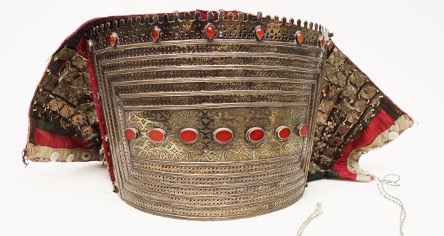 Headdress (egme) for a Tekke Turkmen woman, Afghanistan, early 20th century. Recent donation by May and Rolando Schinasi (TRC 2024.0321)
Headdress (egme) for a Tekke Turkmen woman, Afghanistan, early 20th century. Recent donation by May and Rolando Schinasi (TRC 2024.0321)






